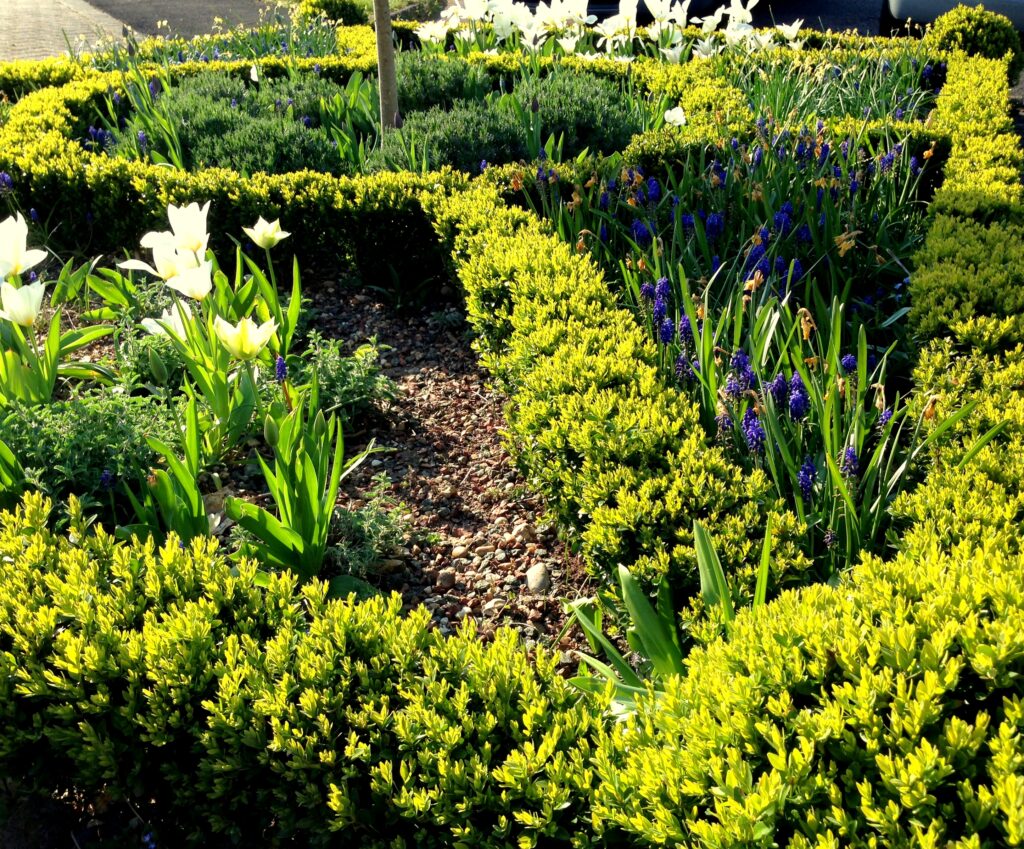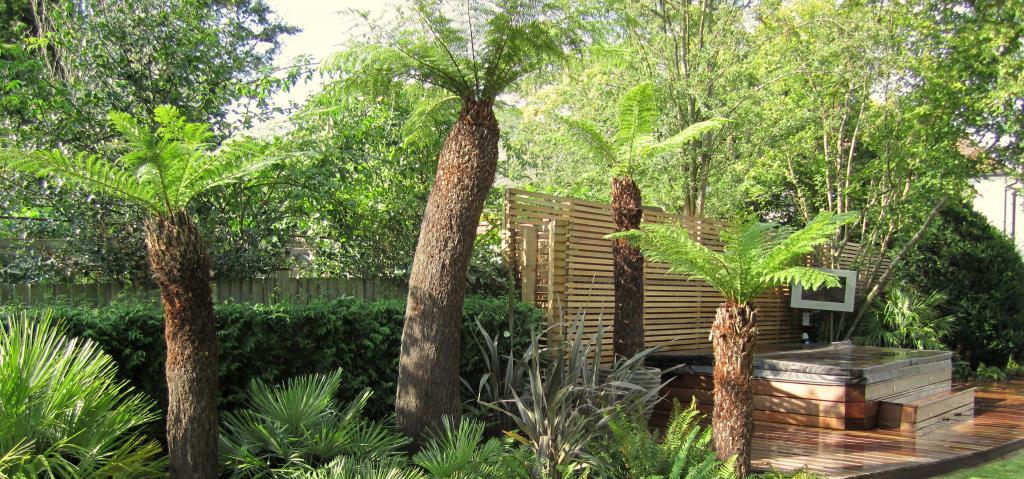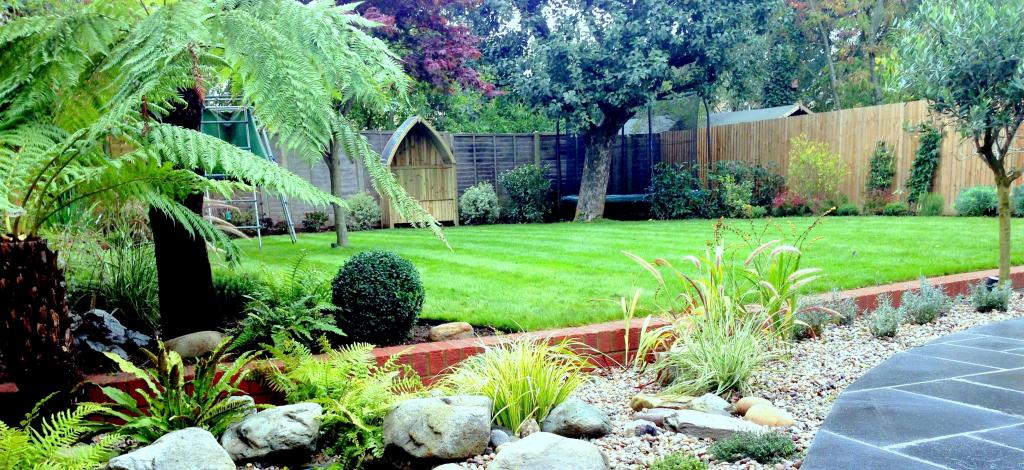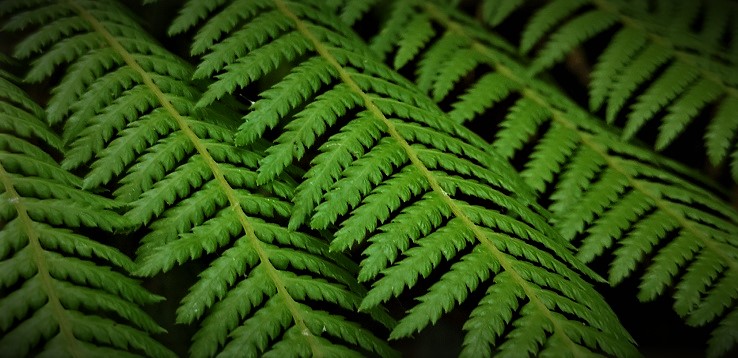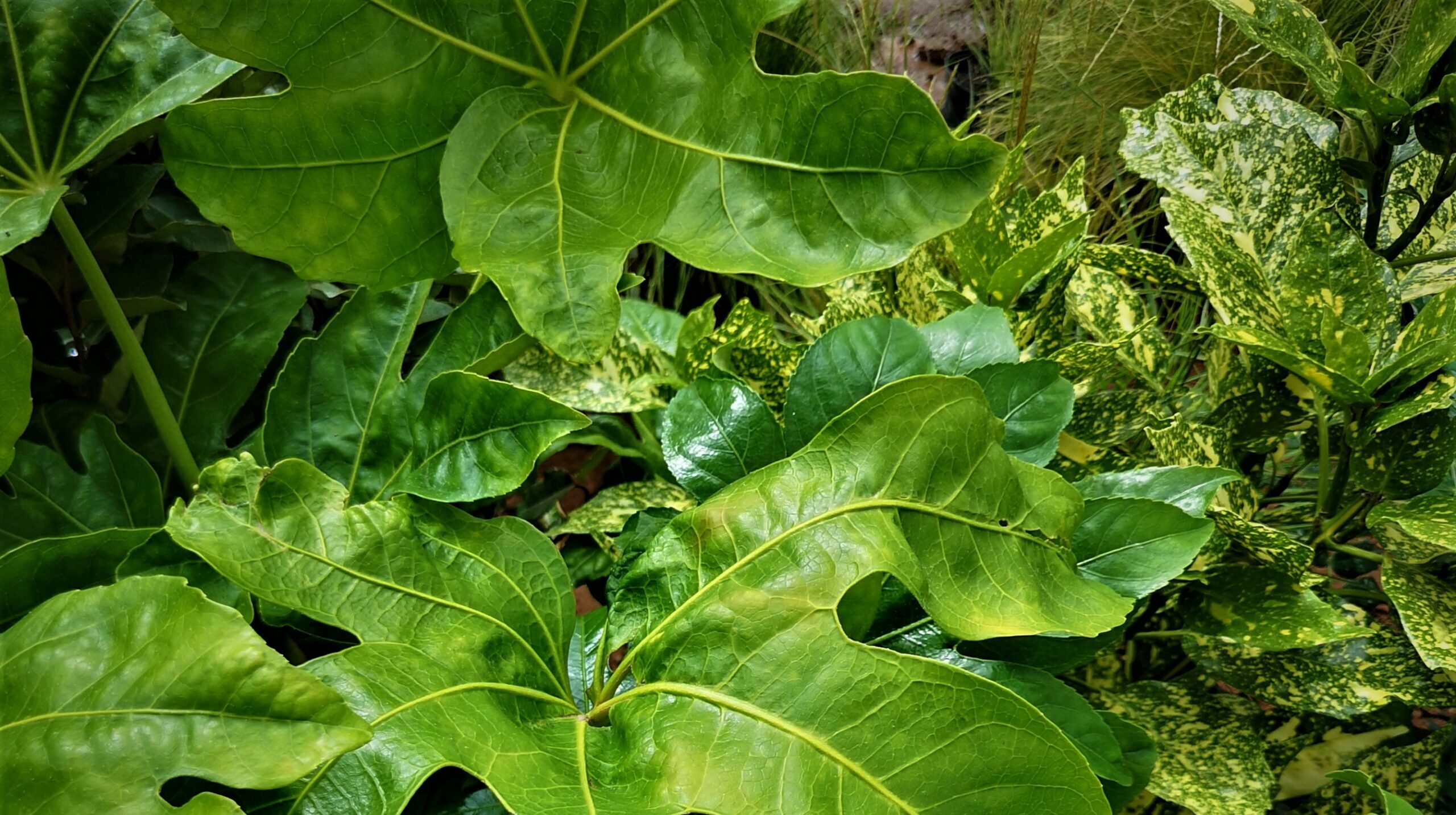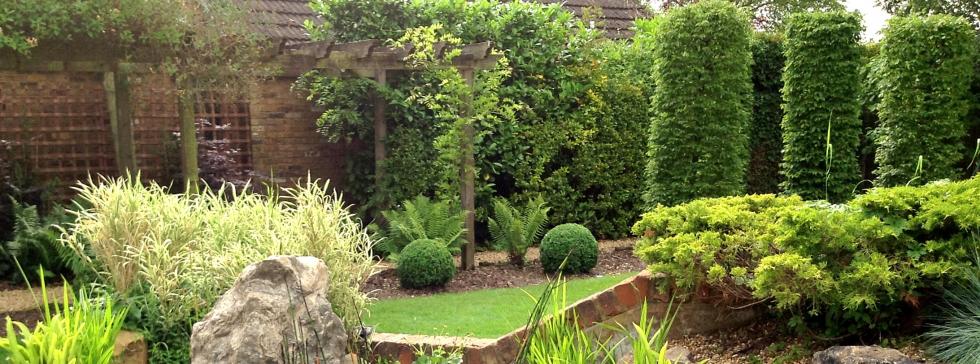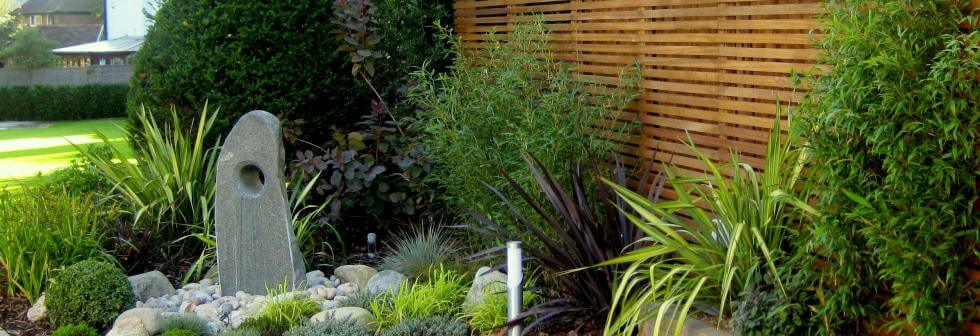Plant Guides ⋅ Garden Designer
Now that the groundwork is done, let’s shift our focus to plants. Check out the Exeter Landscapes Planting Guide for versatile plants perfect for beautiful garden designs in Exeter. These are the ones you’ll want to use over and over again in your projects.
1# Specimen Plants Guide
Olives Trees • Bay Trees • More Specimen Plants…
2# Key Plants • Garden Designer Exeter • Gardener
3# Successful Planting Combinations
© Exeter Landscapes ⋅ garden designer Exeter • Gardener
Specimen Plants ∙ Garden Designer Exeter
What Is A Specimen Plant
In your garden design, a specimen plant plays a pivotal role. It’s utilized within planting combinations to establish a focal point, whether it’s a tree, shrub, or a cluster of flowering plants. Examples of such specimen plants include Olives, Bay Trees, Box Topiary, Pleached Trees, Tree Ferns, Acers, Cloud Trees, Rhododendrons, Magnolias, and Silver Birch.
Specimen Plants Guide
Olives Trees • Bay Trees • More Specimen Plants…
Olives ∙ Garden Designer Exeter
Olives are a fantastic addition to any garden style, whether it’s Mediterranean, traditional, or contemporary. They can be planted as mature trees for a rustic, natural look, or pruned into standards, often referred to as “lollipops.”
Bay Trees ∙ Garden Designer Exeter
Bays offer versatility in their presentation, available in diverse forms such as standards or lollipops, cones, pyramids, or as single plant stems. These evergreen plants can thrive whether planted in pots or directly in the ground.
More Specimen Plant Guides…
Explore a guide for selecting excellent plants for planting and garden design, including Olives, Bay Trees, Boxwood, Pleached Trees, Tree Ferns, Acers, Cloud Trees, Rhododendrons, and Silver Birch.
Specimen Plant Guide Menu
Olives Guide • Bay Trees • Box Guide • Pleached Trees • Tree Ferns • Acers • Cloud Trees • Rhododendron • Silver Birch
Olives Guides • Garden Design Exeter
1# Planting Olives ∙ Garden Designer Exeter
Olives can be planted either directly in the ground or in pots, which adds a touch of drama to your garden design and enhances the tree’s height for a more impactful visual effect. They thrive in well-drained soil and require a sunny position. When planting in soil, incorporating some drainage material can aid in proper drainage.
2# Selecting A Pot ∙ Container ∙ Garden Designer Exeter
Terracotta pots offer a classic aesthetic and come in various shapes and sizes, catering to traditional preferences. Alternatively, fiberglass pots provide a sleeker, contemporary look and are available in diverse sizes and shapes. They are lightweight when empty and boast sturdy construction.
3# Moving Your Pot ∙ Garden Designer Exeter
Ensure that the chosen pots are suitable for outdoor use and fully frost proof. Consider whether you may need to relocate the pot to a sheltered area during winter, ensuring it can be moved with the soil and planted tree. If moving the pot isn’t feasible, protect the plant with landscaping fleece to shield it from cold temperatures.
4# Feet For Pots ∙ Garden Designer Exeter
Elevating the base of the pot off the ground is advisable to safeguard winter roots from frost damage. Specialized feet, bricks, or paving offcuts can serve this purpose effectively.
5# Soil ∙ Compost ∙ Drainage ∙ Garden Designer Exeter
Planting in pots offers better control over drainage. Adding drainage materials at the bottom of the pot and using well-draining potting compost or soil, possibly blended with compost, helps create an ideal growing environment.
6# Positioning Your Olive Tree ∙ Pot ∙ Garden Designer Exeter
Choose a sunny, well-drained location, as waterlogging can be detrimental to olive trees and may lead to their demise. Monitor the plant regularly, checking for signs of leaf scorching or drying out, and adjust watering and positioning accordingly.
7# Watering ∙ Feeding ∙ Protecting ∙ Your Olive ∙ Garden Designer Exeter
Avoid waterlogging or allowing the soil to dry out completely. Keep a close eye on the plant’s leaves for any signs of distress, adjusting watering and relocating it if necessary. Feed the olive tree every couple of years with a mixture of blood, fish, and bone meal, and lightly prune it to maintain a loose shape, considering its slow growth rate. During winter, if feasible, relocate the olive to a sheltered spot and cover it with hessian or fleece for added protection.
Bay Tree Guides • Garden Design Exeter
1# Trimming Bays for Elegance ∙ Exeter Garden Design
Delicately pruning bay trees can yield neatly sculpted foliage, shaping them into various forms that enhance the entrance of a home or serve as a captivating focal point for a patio. When clustered together, they exude even greater visual appeal.
2# Cultivating Bays with Care ∙ Exeter Garden Design
Bays thrive in well-drained soil, especially when planted in pots. Employ a potting compost with excellent drainage properties and consider incorporating additional materials for optimal drainage. Blending soil with compost enriches the planting environment.
3# Nourishment and Placement of Your Bay ∙ Exeter Garden Design
Bays flourish in locations receiving full sun or partial shade. Introduce slow-release fertilizer granules to potted plants and repotting every two years with fresh compost fosters continued health.
Choosing a sheltered location for planting in the ground enhances their resilience to harsh conditions.
4# Winter Protection for Your Bay ∙ Exeter Garden Design
In winter, safeguard bay trees by relocating potted specimens to sheltered areas and shielding both foliage and pot tops during colder spells. Elevating the pot above ground level using pot feet or slab offcuts aids in preventing waterlogging.
5# Companion Planting Ideas ∙ Exeter Garden Design
Bays complement a wide array of plants, particularly those cultivated in formal arrangements. Pair them with lavender, verbena, and phormiums for a visually captivating landscape.
Positioning Your Box ∙ Garden Designer Exeter
Box is shade tolerant. Full sun can scorch the leaves. Don’t allow it to dry out too much during those long hot summer months.
Other Box Topiary Shapes
Cubes, balls, pyramids and spirals are also available for your garden design.
Plant With ∙ Garden Designer Exeter
Plant with agapanthus, lavender, and Hebbes.
Pleached Trees for Striking Landscapes ∙ Exeter Garden Design
Elevate your outdoor space with the elegance of pleached trees. These trees are meticulously trained to form slender screens or hedges, with their branches artfully guided along timber frames to achieve desired shapes.
Popular Varieties of Pleached Trees ∙ Exeter Garden Design
Among the common choices for pleached trees are ash, beech, chestnut, and hornbeam, with plane trees, as well as apple and pear trees, also suitable options.
Crafting a Pleached Pathway ∙ Exeter Garden Design
Pleached trees offer a picturesque solution for crafting pathways or screens. When planting, arrange trees in parallel rows, spacing each approximately 1.2m (4ft) apart, and consider staking newly planted trees for added stability.
Guiding Growth Throughout the Season
Throughout the growing season, commence training new shoots onto the framework, encouraging lateral growth onto adjacent trees while carefully pruning and eliminating any undesired shoots. Once established, the framework can be removed.
Innovative Structures for Garden Elegance ∙ Exeter Garden Design
Metal structures present an opportunity to train plants, shaping them into enchanting tunnels or arbors that add a touch of sophistication to any garden setting.
Tree Ferns ∙ Garden Designer Exeter
Tree ferns are evergreen ferns, which can be deciduous in cooler areas. Tree ferns grow up to 4m in height.
Planting Tree Ferns ∙ Garden Designer Exeter
Tree ferns love moist well-drained soil. Plant in full shade or partial shade. Can be grown successfully in pots. Avoid watering the crown in those winter months. Cover with a fleece in winter with a fleece. And move pots into sheltered spots.
Acers ∙ Garden Designer Exeter
Commonly known as maples. Maples are deciduous. Large maples are magnificent trees great for large open spaces.
Japanese maples are more compacted. And suited to smaller garden designs. These ‘ shrubs’ can be successfully grown in containers and pots. Foliage is yellow, green, or burgundy.
Planting Acers ∙ Garden Design Exeter
Acers love it as a cool shady spot. Ideally in a large container.
Plant Acers With ∙ Garden Designer Exeter
Acers work well with heucheras, hebes and ferns.
Cloud Trees ∙ Garden Designer Exeter
‘NIWAKI’ is the Japanese method of training trees into shapes resembling clouds. NIWAKI means garden trees.
Common ‘Cloud’ Trees ∙ Garden Design Exeter
Plants used include box, yew, Japanese privet, and some pines. Cloud trees work well using evergreen trees. Giving all-year interest.
Hedges For Cloud Trees ∙ Garden Designer Exeter
Hedges can also be clipped into shape. Producing ‘clouds’. It’s a slow process, especially when starting from scratch. It’s best to buy an established tree from a nursery.
Rhododendron ∙ Garden Designer Exeter
Rhododendrons have spectacular flowers. These are popular woodland shrubs. Azaleas are smaller in stature. They can be evergreen or deciduous. Rhododendrons come in a variety of shapes and colors. Most will require acid-based soil.
Rhododendrons can grow quite large and overtake a garden. If space is limited, opt for a dwarf rhododendron or an azalea.
Planting Rhododendron ∙ Garden Designer Exeter
Plant with plenty of neutral or acid organic matter. Mix well into the soil. Before planting. Don’t plant too deeply. As they are surface rooting.
Magnolias ∙ Garden Designer Exeter
Everyone loves a magnolia in flower. Most flower in early spring or summer. They produce bowl-shaped flowers. And evergreen and deciduous varieties. They love fertile well-drained soil.
Silver Birch ∙ Garden Design Exeter
Silver looks great planted in groups. Creating an avenue of trees. Available in both single and multithemed trees. Silver birch looks great in both contemporary and traditional garden designs. They also look great in urban zen garden design.
Planting Silver Birch ∙ Garden Designer Exeter
Silver birch loves naturally fertile soil, well-drained soil in full sun, and dappled shade. Silver birch is generally tolerant of windy and wet conditions.
Key Plants • Garden Designer Exeter • Gardener
Discover the Exeter Landscapes Handbook on Essential Plants, your go-to resource for selecting the perfect flora to elevate your garden design. This comprehensive guide ensures your plants flourish in your unique growing environment while facilitating stunning planting combinations for an exceptional landscape.
Colour • Autumn Colour • Focal Points • Shrubs • Hedges ⋅ Climbers ⋅ Ferns • Evergreen • Low Maintenance • Wild Life Planting • Ground Cover • Dry Sunny • Dry Shady • Moist Shady • Wet Soils • Windy Sites • Clay Soils • Acid Soils •
Plant texture • Plant Shape • Plant Foliage • Garden Designer Exeter • Gardener
Key Plants Colour
Agapanthus ⋅ kniphofia ⋅ iris ⋅ garden designer ⋅ gardener Exeter
Adding Colour To Your Garden Design • Designer Exeter • Gardener
Colour is important in any garden design. It will add interest to any garden design project. It’s a matter of personal taste. Bold brash colours will look great in any contemporary garden design. Muted pastel shades work well in a prairie garden design.
1# Less is More • Colour • Garden Designer • Exeter • Gardener
Is a good idea to identify a couple of key colours. When planting a bed. Two or three main colours. Will give you your bed. More of an impact. Also, it’s a good idea to plant in groups. Giving your bed more of a visual impact.
2# Red & Yellows • Work well together. As do blue and yellows. Colour can vary from drifts of subtle shades to full-on hot colours.
3# Combining • Colour • Texture • Foliage • Garden Designer Exeter • Gardener
Once you have your colour scheme. Why not add a little more interest to your garden design? Combined your colours with the right textures and foliage.
4# Create An interesting Back Drop • Garden Designer Exeter
Ferns add a great backdrop to your colour scheme. And also have interesting foliage. Adding interest to your garden design. Creating stunning planting Combinations. Smoke bush has dark rich foliage. Creating a rich contrasting backdrop. With hot colours ‘popping’ in your planting scheme.
5# Plant Shapes • Colours • Gardener Designer Exeter • Gardener
You’ve added colour, foliage, texture and a backdrop. Finally, add a few interesting shapes to your planting scheme. Classic examples include. Box balls, bay standards and pleached trees.
Colour • Foliage Guide • Garden Designer Exeter • Gardener
Red ⋅ aster ⋅ canna ⋅ kniphothia ⋅ lily ⋅ crocosmia ⋅ helenium ⋅ poppy ⋅ sedum ⋅ gaura
Blue ⋅ agapanthus ⋅ allium ⋅ crocus ⋅ cyclamen ⋅ echinacea ⋅ lavender ⋅ iris ⋅ verbena
Yellow ⋅ achillea ⋅ kniphothia ⋅lily ⋅ sunflower ⋅ iris
White ⋅ achillea ⋅ anemones ⋅ foxglove ⋅ gaura geranium ⋅ astilbe ⋅ lily
Foliage ⋅ hebe ⋅ hosta ⋅ euphorbia ⋅ phormium
Autumn Colour • Garden Designer Exeter • Gardener
Why Autumn Interest • Garden Designer Exeter • Gardener
Summers Months • Flowering Plants • Garden Designer Exeter • Gardener
Most gardeners put all their effort into those summer months. They are when we spend the most time in our gardens. And the months in which a lot of coloured plants thrive. Why not carry this colour into those dully autumn months?
Bulbs • Grasses • Leaves • Garden Designer Exeter • Gardener
Some colour is available. Autumn bulbs can be planted. There is an emphasis on foliage and colour. As grasses and leaves to a golden autumn brown. They can add a backdrop to plants. And of course evergreen plants. Provide a green cover all year round.
Autumn Bulbs • Garden Designer Exeter • Gardener
Autumn bulbs include cyclamens, autumn crocuses and autumn snowflakes. They are all small in appearance. With delicate flowers. They should be planted on mass. Or in elevated containers. So they are not lost in your beds. Planting drifts of single colours. Or in a vibrant mix of colours.
Autumn Plants For Colour • Garden Designer Exeter • Gardener
There are some flowers tipping into those autumn months. And off coarse plants with berries. Rudbeckia straddles late winter to autumn. Helenium just about does the same. Asters can add some welcome colour. Some hydrangeas can keep their flowers into autumn. And not forgetting autumn flowering Hebes.
Autumn Plants For Folliage • Garden Designer Exeter • Gardener
Grasses • Garden Designer Exeter • Gardener
Grasses will turn a rusty brown in early autumn to late winter. Whilst many gardeners feel the need to give your grasses a haircut. At the earliest opportunity. Leave them as is. They will create an interesting backdrop to your garden. Especially in those frosty winter months. Cut back finally in early march to encourage that new spring growth.
Autumn Foliage • Coloured • Berries Garden Designer Exeter • Gardener
Virginia creeper and the judas trees create a golden brown backdrop during those autumn months. Pyracantha and skimmia offer some welcomed red berries.
Evergreen Plants For All Year Interest • Garden Designer Exeter • Gardener
Evergreen plants add all-year interests to your garden design. Bambo is a firm favourite. Add screen, movement and sound to your contemporary garden design. They do well in containers if watered well. In those long hot summer months.
Trachelospermum is a great evergreen climber. White jasmine has a great scent. Once established it really takes off. Bay trees work well as does box topiary.
AUTUMN COLOUR KEY PLANTS – Exeter Landscapes
crocosmia ⋅ hosta ⋅ skimmia ⋅ garden designer ⋅ gardener Exeter
Add Autumn interest. Create an autumn Planting Scheme. For your Garden Design Sidmouth.
Plants’ ⋅ interest ⋅ colour ⋅ pyracantha ⋅ crocosmia ⋅ aster ⋅ autumn crocus
Plants ⋅ structure ⋅ foliage ⋅ miscanthus ⋅ hosta ⋅ Acer ⋅ skimmia
Focal Points • Gardener Exeter
Box Balls ⋅ trees ferns ⋅ water feature ⋅ garden designer Exeter ⋅ gardener Exeter
Creating Focal Points
Many garden designs will benefit from a strong focal point. Adding interest to your garden design. A great focal point can be architectural. And also achieved by clever well thought planting.
Architectural Focal Points • A stone fireplace • a sculpture • a decorative fence • water feature
Plant Focal Points • Box Topiary • Speciement Planting • Raise Beds • Architectural Trees and Shrubs.
Why Add a Focal Point To Your Garden Design?
Why should I add a focal point? A focal point creates interest in your garden design. Especially if it can be viewed from seating areas in the garden. Or from vantage points in your house. A focal point leads the eye. Making your garden look larger.
Grasses ⋅ carex ⋅ miscanthus ⋅ Festuca ⋅ Stipa ⋅ Pennisetum.
Trees ⋅ magnolia ⋅ camellia ⋅ silver birch ⋅ photinia ⋅ eucalyptus
Specimen trees ⋅ Acer ⋅ beech columns ⋅ cloud trees ⋅ cypress ⋅ pleached trees ⋅ ½ standard olives ⋅ tree ferns
Key Plants⋅ Shrubs ⋅ Garden Designer Exeter
Why Add Plants To Your Garden Design ⋅ Garden Designer Exeter ⋅ Gardener Exeter
Shrubs • Fast Growing • Great Value for Money ⋅ garden designer Exeter ⋅ gardener Exeter
Shrubs form the backbone of any planting scheme. They offer great value for money. Most are not expensive. Choiysia, Fatsia, Acuba and Smoke bush. Offer great value for money.
Most grow relatively quickly. Why not plant smaller less expensive shrubs in the autumn months? They will quickly grow throughout the year. Filling out any bed. Adding contrast, with variegated or dark foliage. Create a backdrop and highlight colours. Compliment your hot colours with dark foliage.
Colour 1 ⋅ azelea* ⋅ buddleia ⋅ camellia ⋅ ceanothus ⋅ rhododendron ⋅ erygium
Colour 2 ⋅ hydrangea rhododendron* ⋅ skimmia
Traditional 1 ⋅ aucuba ⋅ bamboo ⋅ box hedging ⋅ buxus ⋅ chamerops ⋅ choisya ⋅ elaeagnus ⋅ escallonia
Traditional 2 ⋅ ligustrum ⋅ mahonia ⋅ pittosporum ⋅ fatsia ⋅ viburnum davidii
Contemporary ⋅ fatshedera ⋅ photina ⋅ hebe ⋅osmanthus ⋅ eucalyptus ⋅ pinus mugo ⋅ trachycarpus (palm)
Dark folliage ⋅ berberis ⋅ heuchera ⋅ phormium ⋅ pittosporum ‘tom thumb’ ⋅ smoke bush
Plant Shape ⋅ Box Balls ⋅ tree ferns ⋅bamboo ⋅ gardener exeter ⋅ garden designer exeter
Hedges ⋅ Climbers ⋅ Ferns
Why Add Hedges To Your Garden Design • Garden Designer • Exeter • Gardener
Hedges add privacy and security to your garden design. They can be added to simply add a boundary between your and your neighbour’s property. Or enclose a front garden. They do look better than a fence. But will require maintenance and looking after.
Hedges • How Fast Will They Grow • Garden Designer • Exeter • Gardener
The rate at which your hedge grows depends on the plant. A fast-growing hedge will give you privacy quicker. But will ultimately require more maintenance. A Laurel Hedge will grow fast. But will require hard cutting back every few years.
Box • Yew • Photina Hedging • Garden Designer • Exeter • Gardener
Box looks great. But is slow growing. If you want an established topiary. You will have to opt for mature plants. Again yew looks great. But is extremely slow growing. Photina is of great value. Relatively fast growing. And easy to maintain.
Create An Enclosed Outdoor Room • Garden Designer • Exeter • Gardener
Create an outdoor room by enclosing an area. Add climbers to mask walls or hide tired fencing. Creating vertical greenery.
Climbers • Garden Designer • Exeter • Gardener
Great for creating vertical greenery in your garden design. Mask an ugly wall or soften a long run of fencing. Climbers can be easily wired to most structures. Once established they cover surfaces quickly.
Ferns • Garden Designer • Exeter • Gardener
Great for planting shaded areas. Where other plants could struggle. They love moist conditions. Plant in groups for maximum impact. Shield ferns and tree ferns look great in an urban zen garden design. And can be used to effectively create a focal point in any garden design.
Hedges ⋅ box hedging ⋅ photina hedging ⋅ copper beech hedging ⋅ yew hedging ⋅ choisysia
Climbers ⋅ clematis armandi ⋅ hedera ⋅ hydrangea ⋅ ivy ⋅ passion flower ⋅ trachelospermum ⋅ wisteria ⋅ hydrangea
Ferns ⋅ lady fern ⋅ buckler fern ⋅ harts tongue ⋅ shield ferns ⋅ lady fern ⋅ buckler fern ⋅ harts tongue
Evergreen ⋅ Planting ⋅ Garden Designer Exeter • Gardener
WHY ARE EVERGREEN PLANTS USEFUL?
Evergreen plants create greenery all year round. If properly looked after they will give you a year of pleasure. Forget those bare winter beds. They can be a lifesaver. Adding interest in those cold winter months.
My favourite evergreens include Skimma, with those red winter berries. Bay standards and box balls. And evergreen magnolia and camelia.
ADD INTEREST • Skimmia ⋅ magnolia ⋅ ferns ⋅ Gardner Exeter ⋅ garden designer
Colour ⋅ camellia ⋅ ceanothus ⋅ rhododendron*
Trees ⋅ eucalyptus ⋅ magnolia
Foliage 1 ⋅ aucuba ⋅ berberis ⋅ buxus ⋅ choisysia ⋅ elaeagnus ⋅ escallonia ⋅ fatsia ⋅ hebe ⋅mahonia ⋅ osmanthus
Foliage 2 ⋅ pachysandra ⋅ phormium ⋅ photina ⋅ pittosporum ⋅ viburnum (some) ⋅ yucca ⋅ bamboo ⋅ chamerops (palm) trachycarpus (palm)
* Requires ericaceous compost.
Low Maintenance ⋅ Planting
WHY LOW MAINTENANCE PLANTING
Let’s be honest. Most people want to enjoy their garden. Rather than working on it. By selecting the right plants for your garden design. You can produce a relative low-maintenance garden. Add an irrigation system. And an artificial lawn. Less time gardening. And more time. Relaxing and enjoying your self!
WHAT ARE LOW-MAINTENANCE PLANTS?
Tough and reliable plants for Low Maintenance Gardens. All plants will need to be watered well for the first year. For healthy root development. Once established. Low-maintenance plants will need the occasional feed. And watering in periods of drought. Reduce the weeds. By adding a weed membrane and bark!
THINK GRASSES • GARDEN DESIGN EXETER • GARDENER
Grasses are great for a low-maintenance garden. Grasses need minimal maintenance. Minimal watering Remember, they don’t like water-logged conditions. Plant grasses in groups, add hot colours and enjoy. Leave silver foliage for autumn interest. Cut back early spring.
PLANT IDEAS · Agapanthus ⋅ rudbeckia ⋅ pennesetium ⋅ garden designer exeter ⋅ gardener exeter
Red ⋅ echinops ⋅ helium
Blue ⋅ verbena ⋅ agapanthus ⋅ erygium ⋅ allium
Blue ⋅ kniphothia ⋅ rudbeckia
White ⋅ heuchera ⋅ hosta ⋅ hedge ⋅ photina
Grasses ⋅ carex ⋅ miscanthus ⋅ festuca ⋅ stipa ⋅ pennisetum
Trees ⋅ acer ⋅ silver birch ⋅ magnolia ⋅ photina
Climbers ⋅ clematis ⋅ hydrangea
Shrubs ⋅ ceanothus ⋅ choisysia ⋅ elaeagnus ⋅ hydrangea ⋅ phormium ⋅ skimmia ⋅ hebe
Ferns ⋅ shield fern ⋅ lady fern ⋅ buckler fern ⋅ harts tongue
Wildlife Gardens ⋅ Planting
NATURAL PLANTS – Buddleia ⋅ sunflower ⋅ skimmia ⋅ gardener exeter ⋅ garden designer exeter ⋅ gardener
Add plants to encourage bees, ladybirds, butter flies and birds.
Blue ⋅ allium ⋅ echinacea ⋅ lavender ⋅ verbena
Yellow ⋅ rudbeckia ⋅ sedum ⋅ sunflower ⋅ white ⋅ achillea ⋅ grasses ⋅ festuca
Trees ⋅ acer ⋅ silver birch ⋅ photina ⋅ climbers ⋅ hedera (ivy) ⋅ jasmine
Shrubs ⋅ buddleia ⋅ ceanothus ⋅ hebe ⋅ ligustrum ⋅ mahonia ⋅ skimmia ⋅ viburnum
Ground Cover ⋅ Planting ⋅ Garden Designer Exeter
CLASSIC HARDY PLANTS – Hebe ⋅ crocosmia ⋅ mahonia ⋅ gardener exeter ⋅ garden designer exeter
Add interest under trees. Mask unsightly areas. Reduce your weeding. Ground cover creates a low-maintenance garden. Once planted, ground cover spreads quickly. Add a weed proof membrane. Plant ground cover plants. Soften with gravel and bark.
Folliage ⋅ crocosmia ⋅ euphorbia ⋅ hosta ⋅ sedum
Shrubs ⋅ azelea* ⋅ euonymus ⋅ hebe ⋅ mahonia ⋅ dwarf rhododendron ⋅ viburnum davidii
* Requires ericaceous compost.
Dry Sunny Sites ⋅ Planting ⋅ Garden Designer Exeter
PLANT FOR DRIER GARDENS – Osmanthus ⋅ echinops ⋅ acer ⋅ gardener exeter ⋅ garden designer exeter
Great plants for dry sunny gardens. Always water new plants. Especially during dry hot spells.
Colour ⋅ folliage ⋅ achillea ⋅ echinops ⋅ erygium ⋅ euphorbia ⋅ sedum ⋅ verbena ⋅ hebe ⋅ lavender
Acer ⋅ holly ⋅ grasses ⋅ festuca ⋅ stipa ⋅ climbers ⋅ passion flower ⋅ trachelospermum ⋅ white jasmine
Shrubs 1 ⋅ trachycarpus (palm) ⋅ berberis ⋅ buxus ⋅ ceanothus ⋅ choisysia ⋅ smoke bush ⋅ elaeagnus
Shrubs 2 ⋅ euonymus ⋅ onsmanthus ⋅ phormium ⋅ pittosporum
Dry Shady Sites ⋅ Planting
Foxglove ⋅ hebe ⋅ foxglove ⋅ gardener exeter ⋅ garden designer exeter
Always try to improve your growing conditions. Prune trees and shrubs. Removing as much vegetation as possible. Select shade tolerant plants. Always water new plants. Especially during hot dry spells.
Smaller plants ⋅ crocosmia ⋅ foxglove ⋅ euphorbia
Ferns ⋅ dryopteris ⋅ polystichum
Shrubs 1 ⋅ aucuba ⋅ box hedging ⋅ elaeagnus ⋅ euonymus ⋅ fatshedera ⋅ fatsia ⋅ hydrangea ⋅ osmanthus
Shrubs 2 ⋅ skimmia ⋅ yew ⋅ viburnum davidii
Climbers ⋅ ivy ⋅ hydrangea
Trees ⋅ cherry ⋅ apple
Moist Shady Sites ⋅ Planting ⋅ Gardener Exeter
CLASSIC PLANTS – Rhododendron ⋅ pachysandra ⋅ rhododendron ⋅ garden designer exeter ⋅ gardener exeter
Smaller plants ⋅ crocosmia ⋅ euphorbia ⋅ hosta ⋅ sedum ⋅ carex ⋅ mischanthus
Shrubs ⋅ fatsia ⋅ ligustrum ⋅ pachysandra ⋅ pieris ⋅ phormium ⋅ rhododendron
Trees ⋅ silver birch ⋅ ferns ⋅ dryopteris ⋅ woodwardia
Wet Soils ⋅ Plants ⋅ Gardener Exeter
WET GARDENS – Hosta ⋅ hydrangea ⋅ ferns ⋅ garden designer exeter ⋅ gardener exeter
Versatile plants that will grow in wet soils. Even in soils that remain wet throughout the summer. Remember improving your soils drainage. Will enable you to grow a wider range of plants.
Smaller plants ⋅ euphorbia ⋅ hosta
Grasses ⋅ carex (some) ⋅ bamboo fargesia
Shrubs ⋅ hydrangea ⋅ viburnum (some)
Trees ⋅ silver birch
Ferns ⋅ dryopteris
Windy Sites ⋅ Plants ⋅ Gardener Exeter
WINDY CONDITIONS – Phormium ⋅ sea holly ⋅ hebe ⋅ garden designer exeter ⋅ gardener exeter
Hardy tough plants for exposed sites.
Smaller plants ⋅ allium ⋅ lavender ⋅ phormium ⋅ echinacea ⋅ eryngium (sea holly) ⋅ euphorbia
Shrubs ⋅ smoke bush ⋅ elaeagnus ⋅ euonymus ⋅ hebe ⋅ hydrangea ⋅ mahonia ⋅ viburnum
Trees ⋅ acer ⋅ silver birch ⋅ eucalyptus
Clay Soils ⋅ Planting
HEAVY CLAY – Viburnum ⋅ hosta ⋅ echinacea ⋅ garden designer exeter ⋅ gardener exeter
Improve drainage by adding soil and grit to planting holes. Opt for plants that will thrive in clay soil.
Red ⋅ crocosmia ⋅ helenium
Blue ⋅ echinacea
Yellow ⋅ achillea
White ⋅ achillea ⋅ foxglove ⋅ hosta ⋅ hydrangea
Grasses ⋅ carex ⋅ miscanthus
Trees ⋅ acer ⋅ silver birch ⋅ magnolia.
Thrubs 1 ⋅ aucuba ⋅ azalea* ⋅ berberis ⋅ buddleja ⋅ choisya ⋅ euonymus
Shrubs 2 ⋅ ligustrum ⋅ mahonia ⋅ skimmia ⋅ viburnum davidii
Hedges ⋅ photina.
* Requires ericaceous compost.
Acid Soils ⋅ Plants ⋅ Gardener Exeter
ACID SOILS – Iris ⋅ silver birch ⋅ hydrangea ⋅ garden designer exeter ⋅ gardener exeter
Plants that thrive in acid soils. Unsuitable for alkali soils. Add ericaceous compost to planting area.
Plants colour ⋅ geranium ⋅ iris ⋅ lily
Trees ⋅ acer (some* )⋅ silver birch ⋅ magnolia.
Shrubs 1 ⋅ yew ⋅ azalea* ⋅ rhododendron* ⋅ cotinus ⋅ euonymus ⋅ hydrangea ⋅ magnolia ⋅ mahonia
Shrubs 2 ⋅ pachysandra (ground cover) ⋅ skimmia ⋅ viburnum ⋅ osmanthus.
Climbers ⋅ jasmine ⋅ wisteria.
*Plants will only grow in acid soils. Add ericaceous compost.
Creating Successful Planting Combinations
Choosing suitable plants for specific locations is crucial. Opt for complementary plants that harmonize well together and align with your garden design theme. This is essential for creating a successful garden design.
Contemporary • Traditional • Zen
Contemporary ⋅ Planting Combinations
GO FOR GRASSES
Carex ⋅ rudbeckia ⋅ pennisetium ⋅ garden designer exeter ⋅ gardener exeter
Small Bed ⋅ Planting Combinations ⋅ Garden Designer Exeter
Modern italian ⋅ allium ⋅ olive ½ standard ⋅ hebe ⋅ phormium ‘baby bronze’
Modern white ⋅ white hydrangea ⋅ hosta ⋅ white foxglove ⋅ heuchera
Relaxed pairie ⋅ crocosmia ⋅ rubeckia ⋅ verbena ⋅ pennisetum grass ⋅ euphorbia ⋅ phormiums
Bladed colour ⋅ allium ⋅ achillea ⋅ crocosmia ⋅ heuchera ⋅ acer
Modern zen ⋅ allium ⋅ crocosmia ⋅ euphorbia ⋅ carex ⋅ heuchera ⋅ miscanthus ⋅ acer
Contemporary pairie ⋅ echinacea ⋅ crocosmia ⋅ acer ⋅ carex grass ⋅ osmanthus ⋅ fatsia.
Large Bed ⋅ Planting Combinations ⋅ Garden Designer Exeter
1 – Agapanthus ⋅ carex ⋅ verbena ⋅ gardener ⋅ garden designer exeter ⋅ gardener exeter
Relaxed formal ⋅ allium ⋅ crocosmia ⋅ gaura ⋅ lavender ⋅ hebe ⋅ fatsia ⋅ box ‘lollipop’ ⋅ beech columns
Modern tropical ⋅ crocosmia ⋅ helenium ⋅ hosta ⋅ acer ⋅ phormium tricolour ⋅ phormium ⋅ bronze ⋅ fatsia
Contemporary border ⋅ crocosmia ⋅ echinanea ⋅ carex grass ⋅ osmanthus ⋅ fatsia ⋅ acers
Pastel border ⋅ globe thistle ⋅ lavender ⋅ echinacae ⋅ hebe ⋅ erigion ⋅ smoke bush ⋅ olive ½ standard
Classic contemporary ⋅ white astilbe ⋅ heuchera ⋅ acer ⋅ shield ferns ⋅ viburnum davidii ⋅ silver birch
Colours contrast ⋅ echinacea ⋅ verbena ⋅ helenium ⋅ achillea white ⋅ erigon ⋅ heuchera ⋅ euphorbia ⋅ smoke bush
2 – Kniphothia ⋅ crocosmia ⋅ rudbeckia ⋅ garden designer exeter ⋅ gardener exeter
Colour grasses ⋅ achillea ⋅ echinacea ⋅ verbena ⋅ stipa ⋅ mischanthus
More grasses ⋅ rudbeckia ⋅ helianthus ⋅ globe thistle ⋅ skimmia ⋅ japanese blood grass
More grasses ⋅ carex ⋅ festuca ⋅ stipa ⋅ miscanthus ⋅ beech hedging
Box italian ⋅ allium ⋅ erygium ⋅ lavender ⋅ skimmia ⋅ pittosporum ⋅ box hedging ⋅ olive ½ standard
Box colour ⋅ agapanthus ⋅ yellow tulips box pyramid ⋅ fatsia ⋅ acuba
Hot dry ⋅ lander ⋅ verbena ⋅ hebe ⋅ globe thistle ⋅ stipa box balls
Ground cover ⋅ allium ⋅ poppy ⋅ hosta green ⋅ host white
Traditional ⋅ Planting Combinations
3 – Iris ⋅ allium ⋅ for-get-me-not ⋅ garden designer exeter ⋅ gardener exeter
Formal box ⋅ allium ⋅ yellow tulips ⋅ lavender ⋅ hebes ⋅box hedging
Relaxed box ⋅ allium ⋅ erynium ⋅ skimmia ⋅ pittosporum ‘tom thumb’ ⋅ olive ½ standard ⋅ box hedging
Small border ⋅ achillea white ⋅ crocosmia ⋅ eryngium ⋅ helenium
Classic italian ⋅ allium ⋅ lavender ⋅ box balls ⋅ standard olives
4 – Foxglove ⋅ hydrangea ⋅ tulip ⋅ garden designer exeter ⋅ gardener exeter
Reds blues ⋅ crocosmia ⋅ guara ⋅ lavender ⋅ hebes ⋅ phormiums
Just traditional ⋅ crocosmia ⋅ lavender ⋅ guara ⋅ box balls ⋅ smoke bush
Autumn colour ⋅ crocosmia ⋅ aster ⋅ camellia ⋅ hosta ⋅ acer ⋅ miscanthus
Hot dry ⋅ iris ⋅ thyme ⋅ phormium bronze ⋅ choisysia ⋅ acer
Ground cover ⋅ crocosmia ⋅ euphorbia ⋅ rhododendron⋅ festuca ⋅ skimmia
Zen ⋅ Japenese ⋅ Garden Designer Exeter
5 – Acer ⋅ pinus mugo ⋅ hosta ⋅ garden designer exeter ⋅ gardener exeter
A relaxed feel and structure. Great for both Contemporary and Traditional Garden Design.
Classic zen ⋅ astilbe ⋅ euphorbia ⋅ hosta ⋅ black bamboo ⋅ dwarf bamboo fargesia
Coloured zen ⋅ clematis ⋅ crocosmia ⋅ euphorbia ⋅ hydrangea fatsia ⋅ hedera ⋅ acer ⋅ carex ⋅ miscanthus
Tropical zen ⋅ camelia red ⋅ camelia white ⋅ fatsia ⋅ choiysia ⋅ dwarf bamboo
Zen ⋅ ferns ⋅ fern blechum ⋅ ferns dryopteris ⋅hosta white ⋅ hosta variegated ⋅ fatsia
More zen ⋅ magnolia ⋅ white hydrangea ⋅ fig ⋅ camelia red ⋅ skimmia ⋅ pittosporum tobira

